St. Thomas grey, St. Thomas grey / The longest night & the shortest day
December 21: Thomasmas (Thomastide Welcome | Printables)
Well a day, well a day
St. Thomas goes too soon away,
Then your gooding we do pray,
For the good time will not stay.
St. Thomas Grey, St. Thomas Grey,
The longest night and the shortest day
Please to remember St. Thomas's Day.Rhyme from The Bilston Mercury, Staffordshire1
Welcome to December, dear friends! We’re about to enter the waiting-season of Advent: a multi-faceted time of preparation before Christmas…and, for most folks in Western Christian traditions, the beginning of a fresh Church year.2
Sometimes, I find myself angsting over our preparations for this season of preparation! And while a bit of tinkering does help simplify our time in Advent, I have to remind myself that Advent IS the preparation. The wisdom in this season is that it is, in and of itself, a process of spiritual formation that re-shapes us for the mysteries of Christmas - and if we allow ourselves to be taken up into these Advent patterns, we have opportunities to shed the particulars that are clouding our vision, looking to the incarnation - both its accomplishment as well as its time-defying promises - with fresh eyes.
Of all the preparations for Christmas that Advent offers us, Thomasmas on December 21 has become one of my favorites. Celebrating the Apostle Thomas (“Doubting Thomas”) and intersecting with both the Winter Solstice and the O Oriens (“Oh Dayspring”) Antiphon, this feast turns us to face the coming of the light.
As darkness falls earlier and earlier, as our evening “tucking in” of our farm menagerie is done by dim barn-light, or, if it’s a clear night, the moon…the solstice Thomasmas feels like we’re about to let out a breath that we’ve been holding for too long.
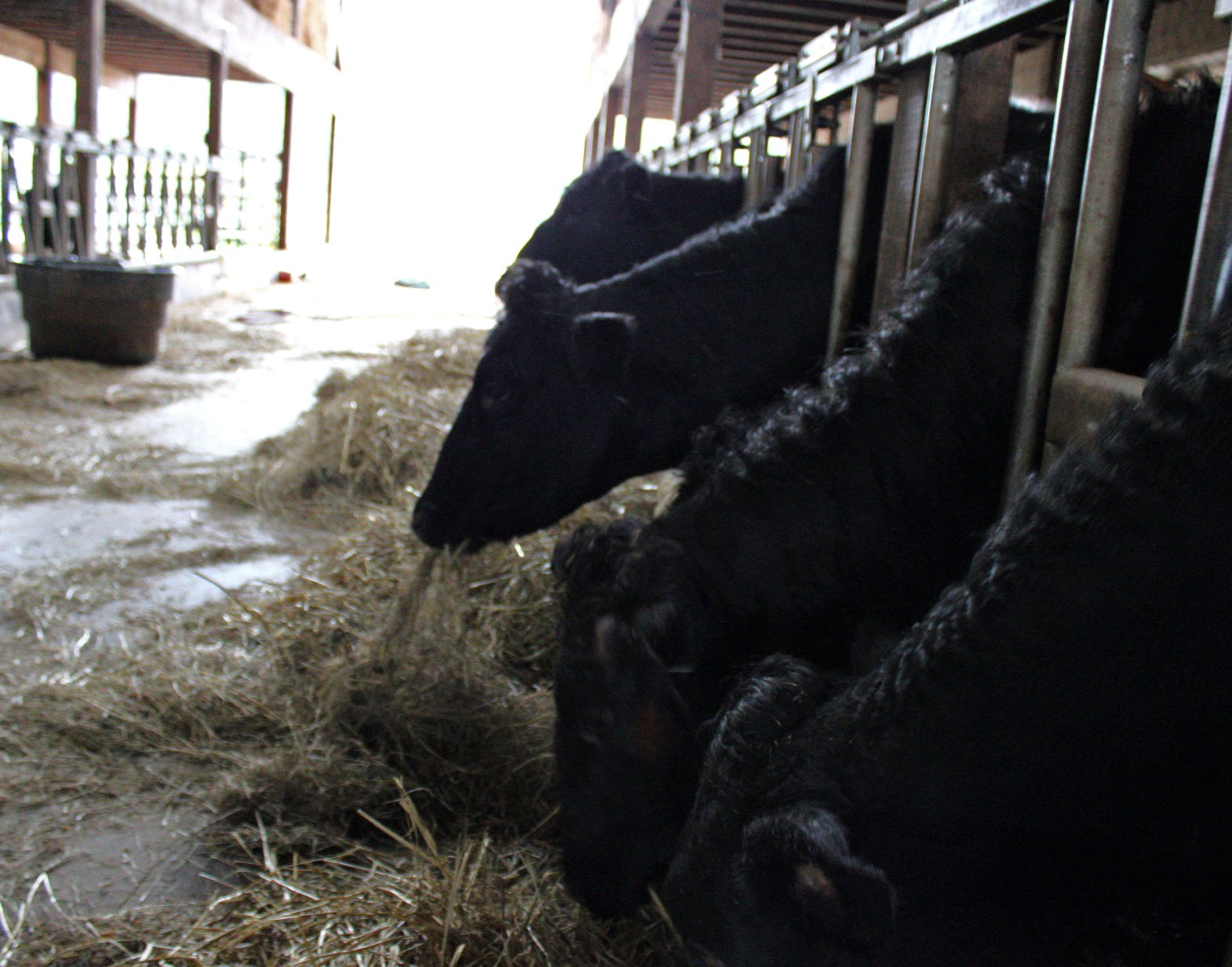
We often get asked, “What do you do on the farm in these cold winter months?” And though there are always unending chores to be done with so many animals, and, if we haven’t flooded3, there may still be some kale in the field to harvest - much of the winter farm work is silently being done in the dark of the soil. Cover crops are busily feeding the ground, too - translating the last bit of autumn sunshine into spring grazing for the cattle.
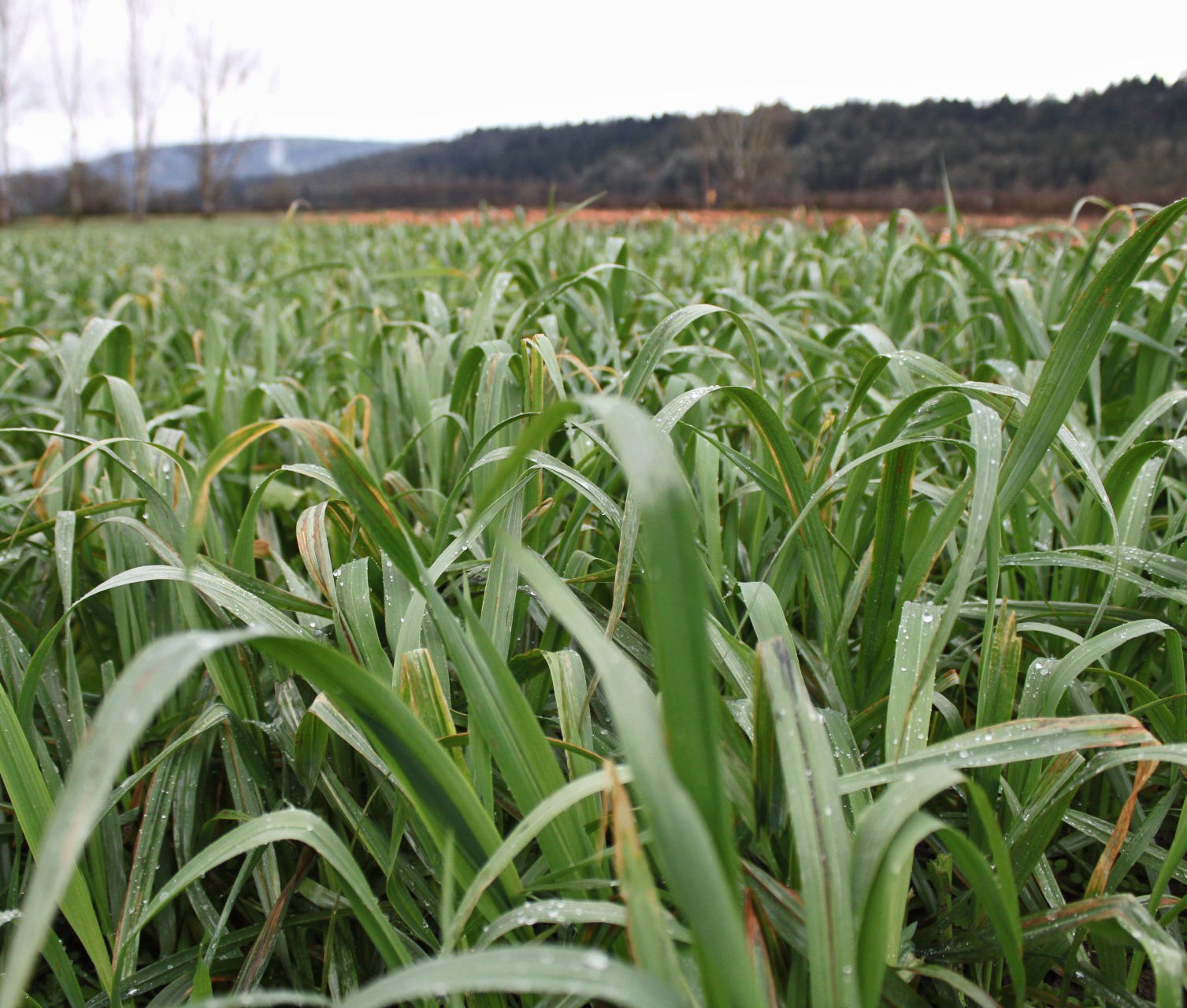
During Advent, the farm is waiting in darkness, like us. Its most productive work isn’t done by our own hands, but by the unseen, quiet work in the soil and in the compost. All this underground, silent effort of wintry microbes will eventually be made manifest - dazzling in the form of June’s first sun-ripened strawberries, tomatoes hanging heavy on the vine. It’s hard to imagine that as I look out on the frosty fields when the sun sets before dinner’s on the table, but the soil is imagining it for me.
St. Thomas - so relatable in his doubts, his faith, and the internal work of Christ in his soul - is such a kindred companion during these winter Advent days. The solstice marks the precipice of light and dark, where Thomas stood as well - encompassing that liminal space between unbelief and faith. A space familiar to us all, when unseen work is shifting hearts in ways not yet visible…but, gradually, the days begin to lengthen, and the visible is made manifest. Doubt becomes faith (a neverending cycle, it seems), and Christmas is eternally delivered to us.
Let’s get to know St. Thomas a bit more today, and then, over the next few weeks, see how we can fold his feast into our homes and our villages.
Depart in peace unto your pastures
As we start to unravel the threads of Thomasmas together, we’re going to encounter an ecumenical puzzle - the dating of the feast of St. Thomas varies throughout Christian traditions. Historically, Thomasmas was celebrated on December 21, which is why we see its customs infused with Christmas preparation. Some denominations (Lutherans, Anglicans) have kept that date, but not all - in 1969’s reforms, the Catholic Church moved Thomasmas to July 3 (the date of the translation of Thomas’ relics)4, in an effort to simplify the final Advent approach to Christmas.
Although this variation in dating complicates the calendar for us a bit, since our community here spans a whole spectrum of denominations, I like to see it as a rich opportunity - one where we can explore the flavors taken on by a feast in different natural and liturgical seasons. If your tradition’s calendar holds St. Thomas’ feast in December, this Thomasmas journey will perhaps seem more familiar; if your calendar doesn’t, I hope this can be an invitation to look through the lens of our forebears’ approach to this feast day, to glean whatever kernels of wisdom are there for us.

What we understand today about our ever-relatable “Doubting” Thomas comes from both scripture and from legends & stories told in apocryphal texts - ancient writings that didn’t pass into the canon of the Bible, but nonetheless paint a picture of a people’s understanding of Thomas’ faith & testimony.
In scripture, we see St. Thomas (given the epithet Didymus - Greek for “twin”) only briefly in the gospels of Matthew, Mark, & Luke - as well as a quick mention in the book of Acts. John, however, enfleshes Thomas for us: he gives us the story of Thomas’ solidarity with Jesus in the aftermath of Lazarus’ death (John 11); as well as the story of Thomas’ disbelief, followed by his confession of faith, when encountering the resurrected Christ (John 20).
John illuminates two distinct sides of our twin-like apostle: at once the believer and the unbeliever, the forthright disciple and the skeptic. The thread weaving Thomas’ double-nature together is the grace & work of Christ himself - a divine faithfulness infusing Thomas, independent of any skepticism. A gentle, interior tug made visible in John 20, when Thomas is invited to reach out and touch the wounds of the resurrected Christ…a profoundly sacramental moment, when all of Christ’s work on the complicated, dual interior of St. Thomas is made tangible. Thomas’ doubt is a vehicle for the grace of God…a mystery inviting and beckoning, moving and advancing hearts.
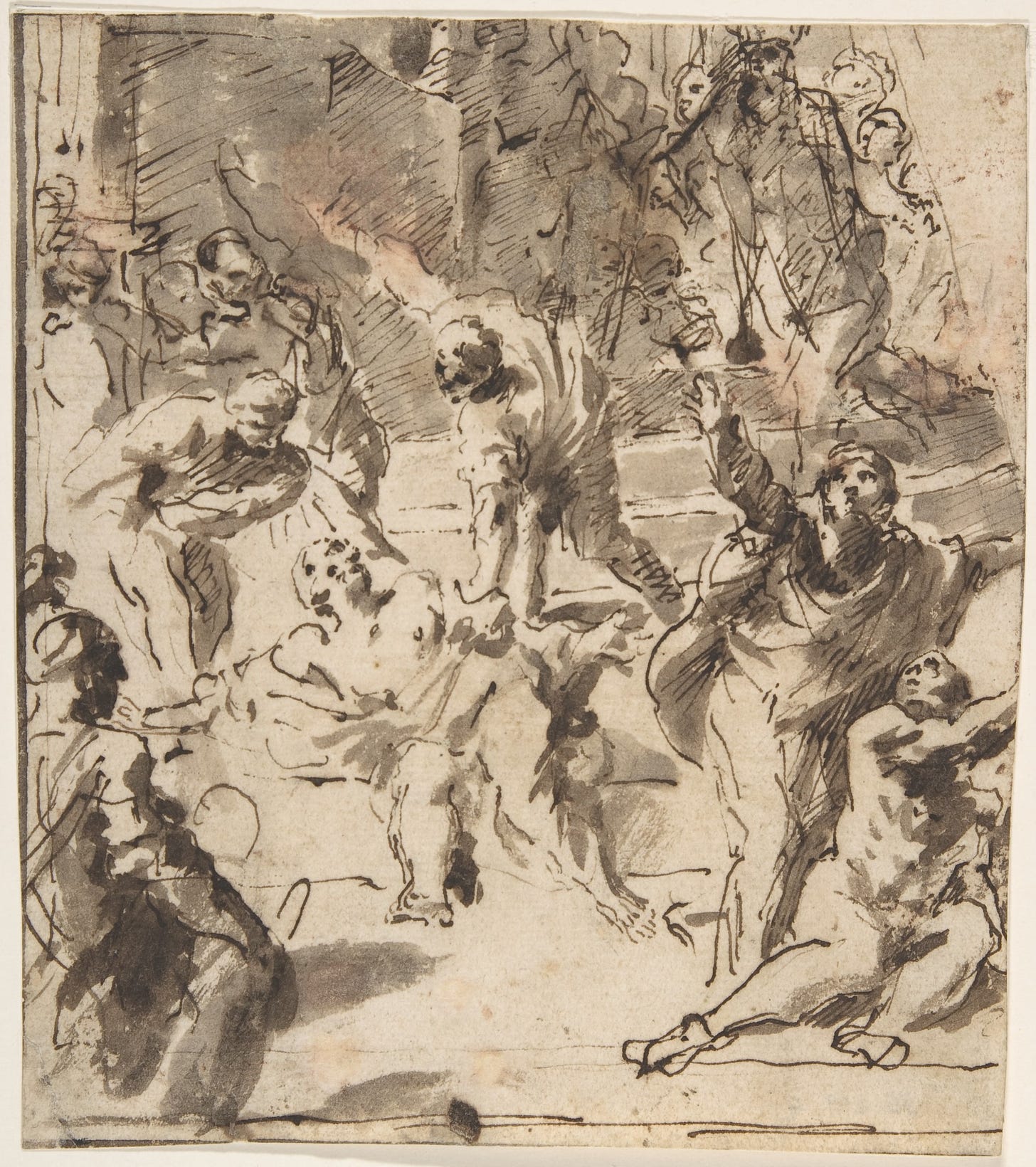
When I look at these passages through the lens of Thomasmas celebrations on the Winter Solstice - the tipping point of winter, when the night is at its longest but afterwards begins to steadily wane toward daylight - they’re illuminated in new ways for me. I see the framework of Thomas’ spiritual formation in me, too…cycles of belief and doubt, strength and despair. And once again, just as Thomas’ disbelief dissolved in Christ’s steady presence of invitation, the long solstice night quietly gives way to daylight, as it does every winter…like a prologue to Christmas that we see played out in our own souls, again and again throughout our lives and circumstances, where our cycles of disbelief are softened by the steady influence of inexplicable grace.
I’m reminded of the quiet work of the soil in the winter, microbes silently turning dirt into fertile ground.
We see more of St. Thomas and his journey of faith in a few apocryphal texts, including the Coptic Gospel of Thomas and the Acts of Thomas (both probably composed in the 3rd century) - and especially in his mythic encounters of wild Asiatic donkeys (also called Onagers), Thomas feels especially familiar.
Early on in the Acts of Thomas, the apostle is greeted by a talking colt - who, we learn, was the very colt upon which Jesus rode into Jerusalem.5 A later chapter shares a more elaborate story of Thomas’ encounters with Onagers - on his way to the home of a mother & daughter who are possessed by demons, St. Thomas enlists a herd of otherwise-feisty wild donkeys to bear him to the family in need.
After Thomas drives the demons out of the women, both mother and daughter fall to the ground as if dead. Distraught, Thomas’ disciples look around helplessly - but then one wild donkey steps forward and addresses the apostle:
“Why standest thou idle, O apostle of Christ the Most High, who looketh that thou shouldest ask of him the best of learning? Wherefore then tarriest thou? For lo, thy teacher desireth to show by thy hands his mighty works. Why standest thou still, O herald of the hidden one? for thy (Lord) willeth to manifest through thee his unspeakable things, which he reserveth for them that are worthy of him, to hear them. Why restest thou, O doer of mighty works in the name of the Lord? for thy Lord encourageth thee and engendereth boldness in thee. Fear not, therefore; for he will not forsake the soul that belongeth unto thee by birth. Begin therefore to call upon him and he will readily hearken to thee. […]
“But unto you the multitudes that stand by and look to see these that are cast down raised up, I say, believe in the apostle of Jesus Christ: believe the teacher of truth, believe him that showeth you the truth, believe Jesus, believe on the Christ that was born, that the born may live by his life: who also was raised up through infancy, that perfection might appear by his manhood. He did teach his own disciples: for he is the teacher of the truth and maketh wise men wise.”6
A wild donkey’s shocking, miraculous words encapsulate the promise of Christmas so beautifully: that, by believing in the Christ who was born, “the born may live by his life.” A divine invitation to faith is extended to Thomas, as it had been by Jesus himself after the resurrection.
Buoyed by the donkey, Thomas glorifies God - and, standing over the bereft women, he declares:
“My Lord and my God, I am not divided from thee (or doubt not concerning thee), nor as one unbelieving do I call upon thee, who art always our helper and succourer and raiser-up; who breathest thine own power into us and encouragest us and givest confidence in love unto thine own servants. I beseech thee, let these souls be healed and rise up and become such as they were before they were smitten of the devils.”
As before, St. Thomas’ response to the influx of grace is a unifying, powerful, restorative belief. The women arise, now enlivened through St. Thomas’ faith, and head home to recover.
As they depart, we see a tender benediction from St. Thomas to the wild herd through which Christ had moved:
…the apostle said unto the wild asses, “Follow me.” And they went after him until he had brought them without the gate. And when they had gone out, he said to them: “Depart in peace unto your pastures.” The wild asses therefore went away willingly; and the apostle stood and took heed to them lest they should be hurt of any, until they had gone afar off and were no more seen.
When we encounter the layers of story & custom surrounding St. Thomas on his Winter Solstice feast day, we witness echoes everywhere: the longest night of the year has arrived, and, like the stages of disbelief endured in Thomas and in our own struggling hearts, that long night will be broken by a patiently lengthening sunlight.
The night feels never-ending, the solstice fields look dead and dormant - but the landscape conceals a hidden array of fertile activity that will, eventually, burst into life again.
Art + Resources
This month, I have another addition for your Book of Hours (a bonus for my paid subscribers) - a December calendar, focusing on Thomasmas!
I’m including two sizes of the calendar (in case you want to tape a smaller one into your notebook or planner), as well as a blank version so that you can write in the feasts specific to your denomination, and include family feasts as well!
I’ve also created a quick-reference sheet you can tuck into your binder. You could print it on the back of the calendar and stick it to your fridge as an easy-access reminder!


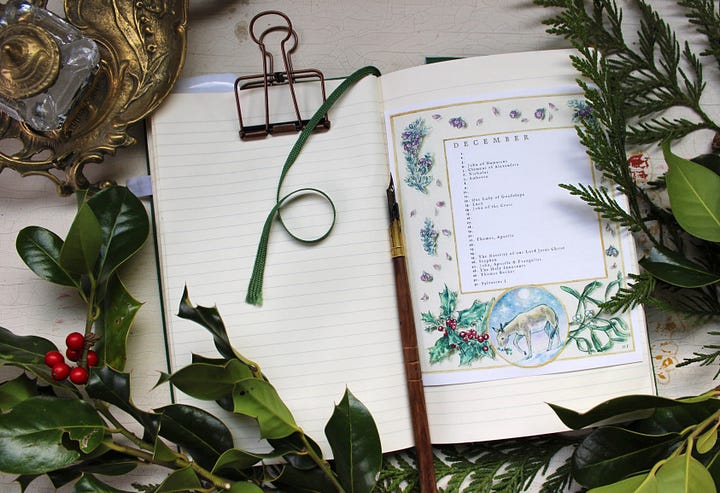
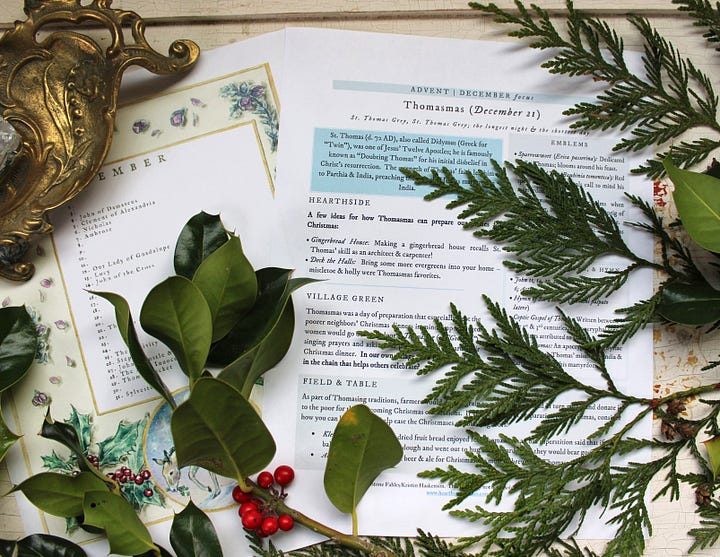
Head over to the Scriptorium to find your Thomastide printables:
Over the next few weeks, I’ll be offering some more reflections on Thomasmas customs & traditions…ways to meld this feast into our homes and into our village.
Have you celebrated the feast of St. Thomas before? Do you mark his feast in December or in July? I’d love to hear more about your traditions!
Pax vobis - and “depart in peace unto your pastures,”
Kristin
If you’d like to make a one-time donation, I have a PayPal Tip Jar - please know that I’m so grateful for your monetary support, which really does help me continue to do this work that I’m so passionate about!
For those who are able to support a monthly or annual paid subscription, I offer occasional new printables, extra posts, and access to my whole library of printables: the Scriptorium. I’m so grateful for your generosity, which helps to support my work through the purchase of additional books for research, art supplies, and more!
For more reflections and perspectives on the liturgical year, please visit Signs + Seasons: a liturgical living guild!
Recorded in G. F. Northall’s English Folk-Rhymes (1892)
Our Orthodox brothers & sisters began their preparation for the Nativity in mid-November, and their Church year began in September - for more reflections and info, visit Catie’s blog!
As I’m about to hit “publish” on this article, we’re prepping for what looks to be a big flood next week.
The Malankara Orthodox Church celebrates three feasts for St. Thomas: the translation of his relics on July 3, the day he was speared on December 18, and the day he died on December 21.
Mythic storytelling defies time and space!
Chapter 8 of the Acts of Thomas, translated by M.R. James (Clarendon Press, 1924)


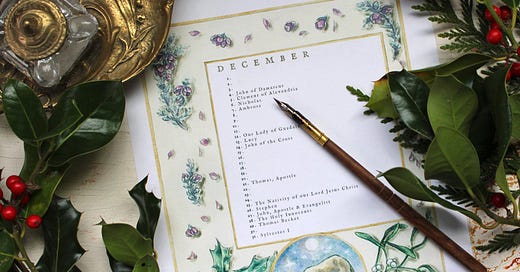




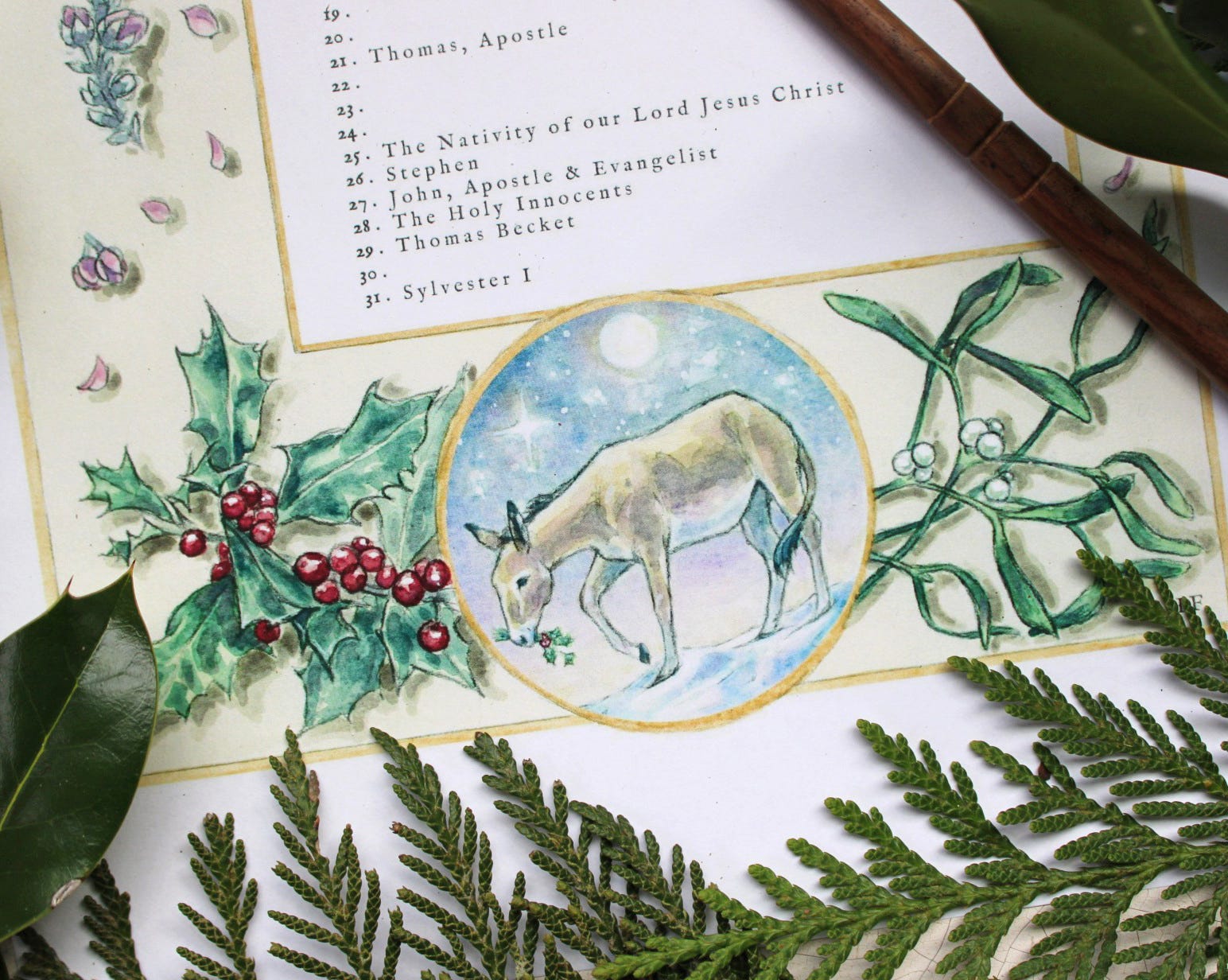
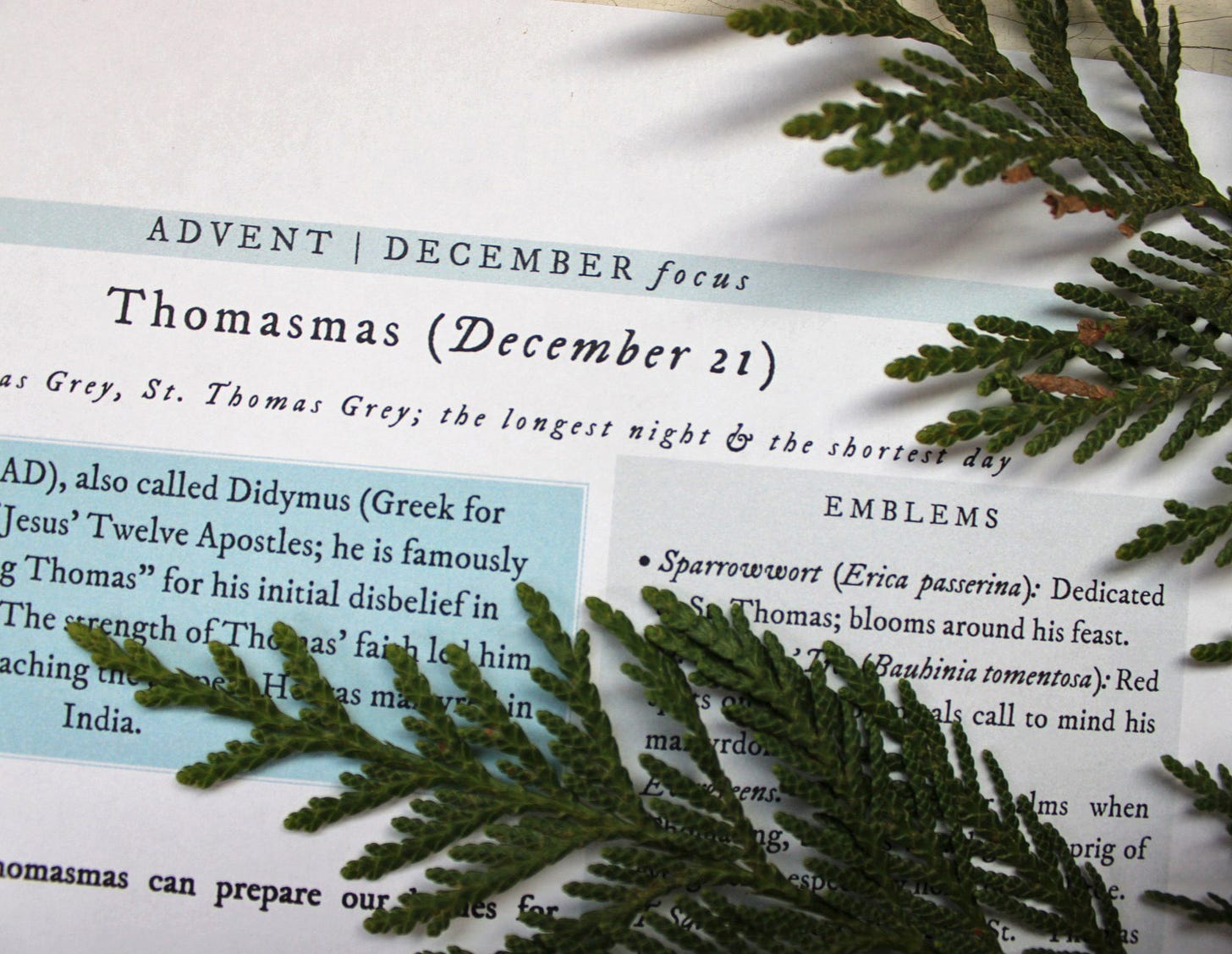
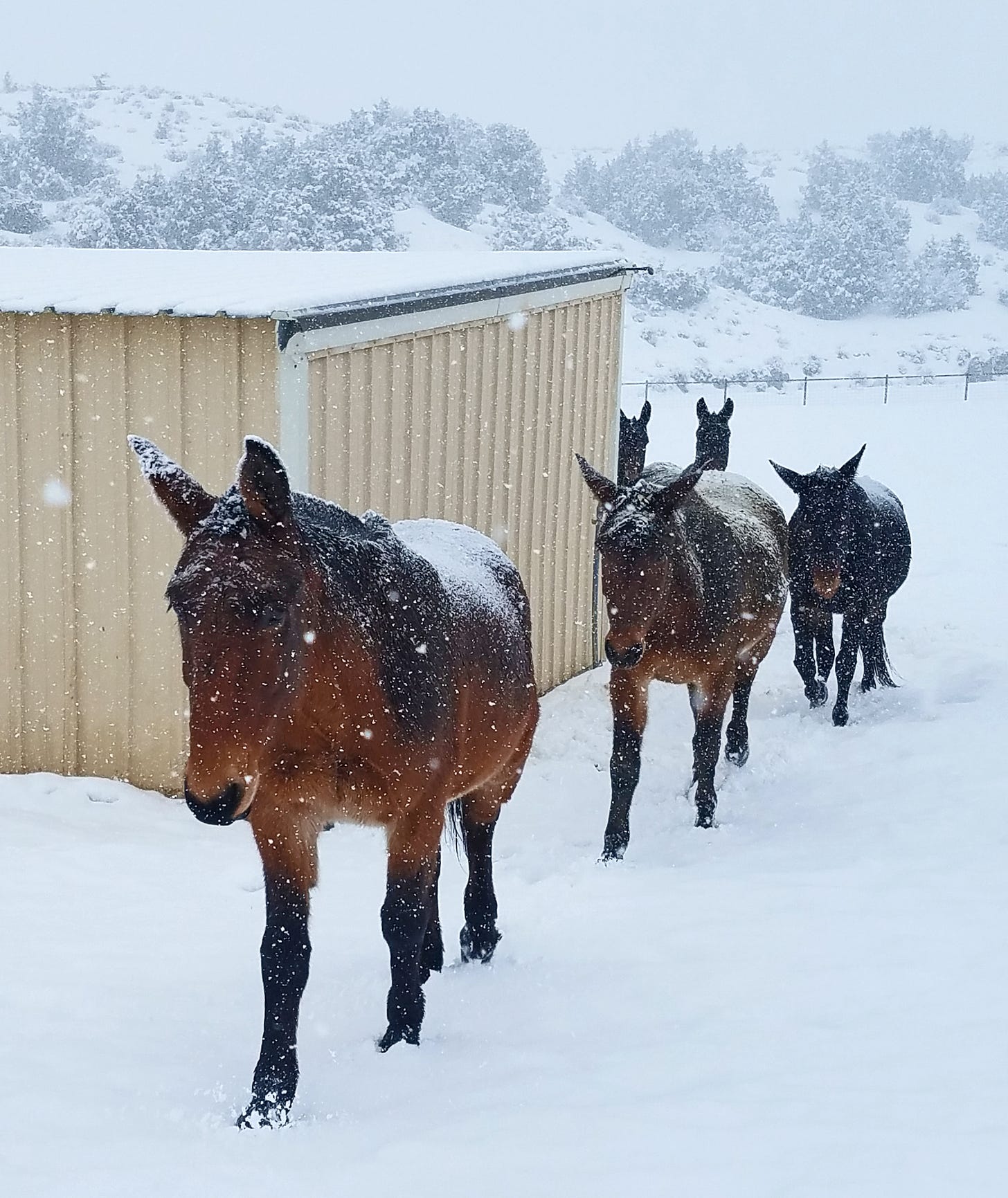
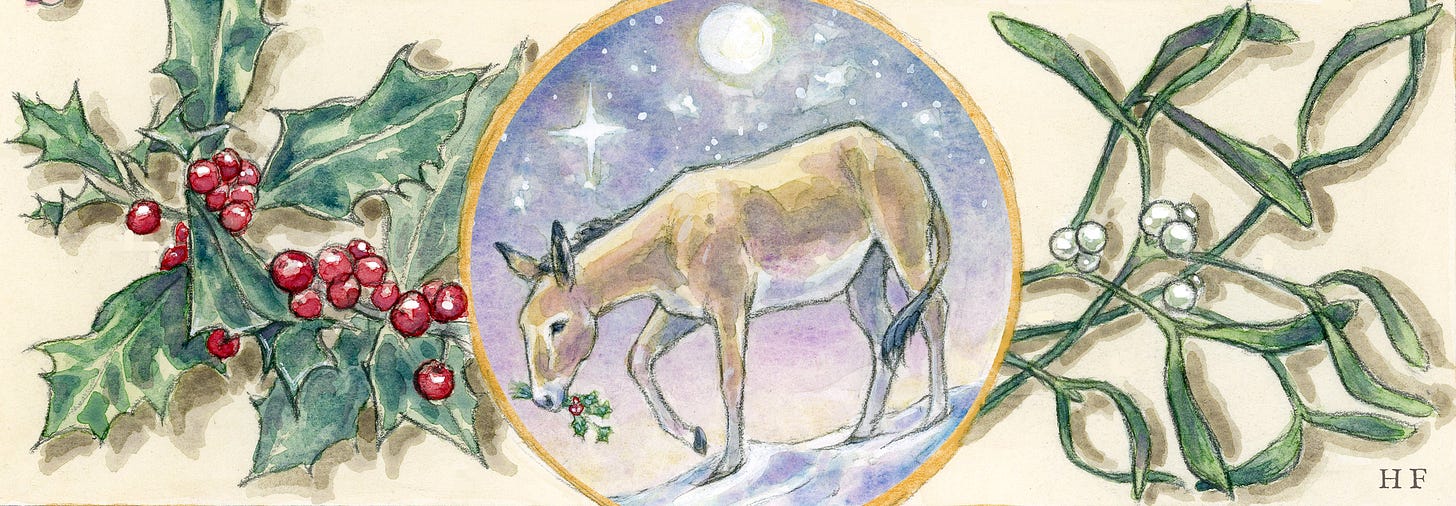
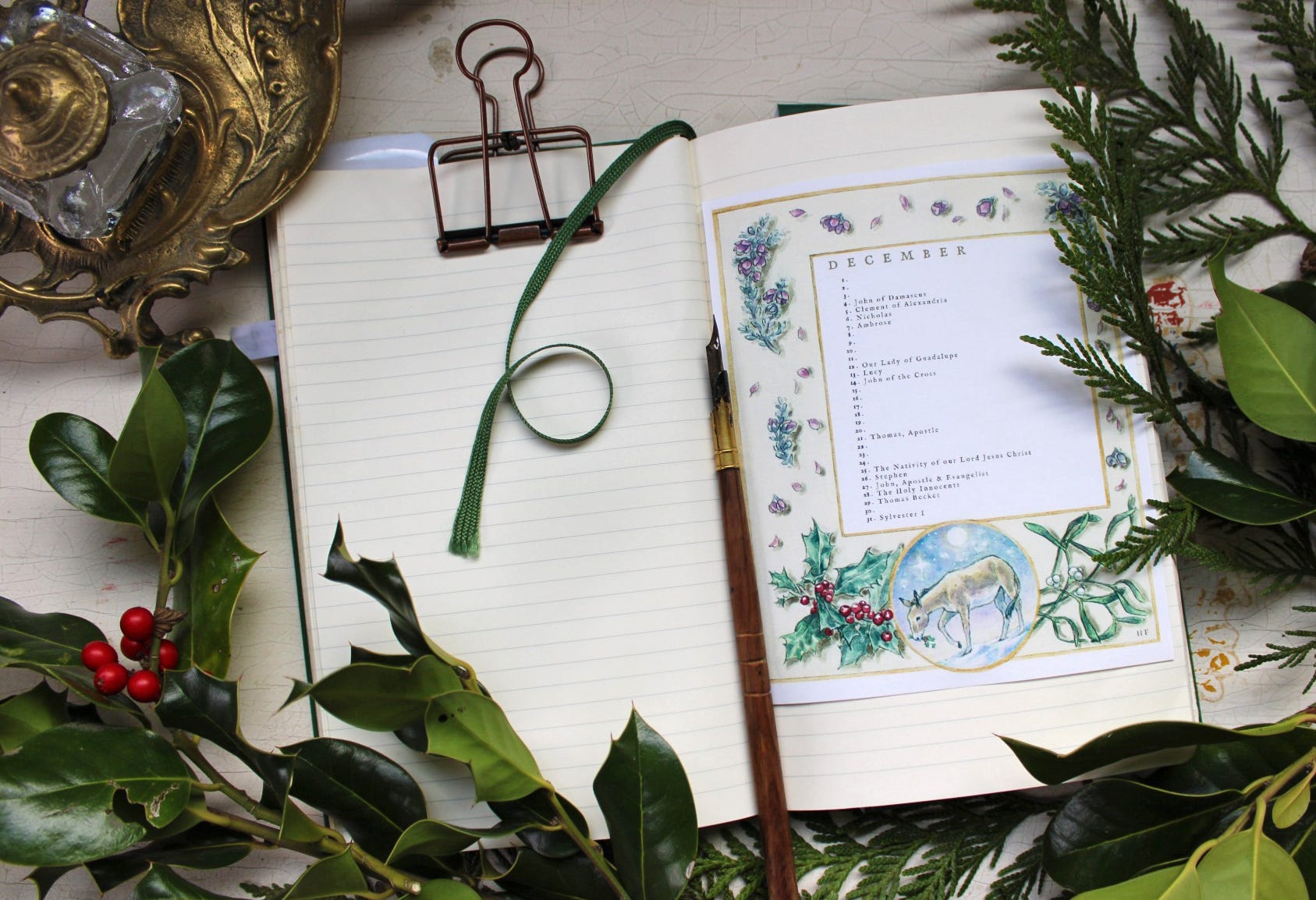
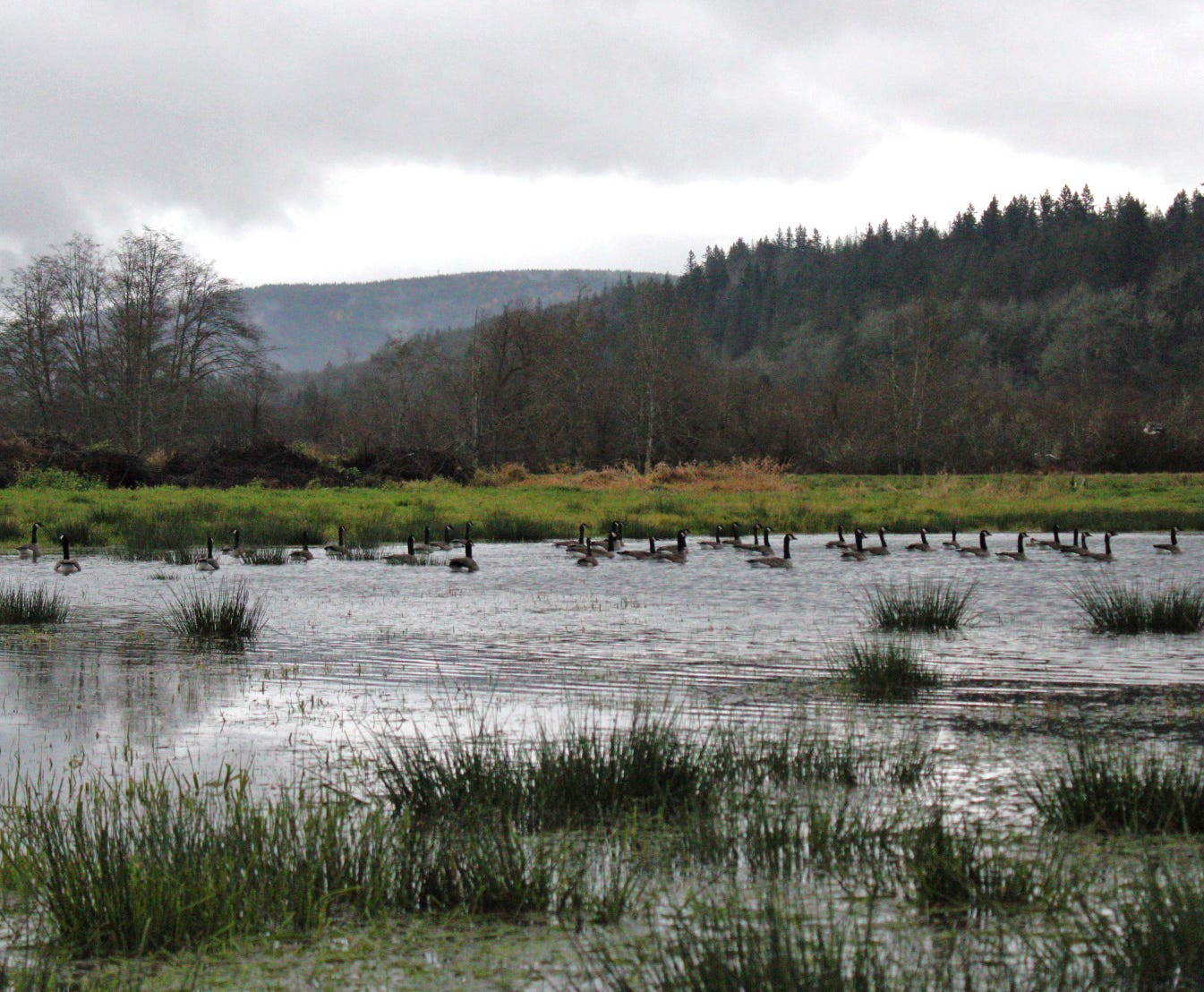
Wow! What perfect timing! I just spent two hours on the phone with my adult son who wants so much to believe but is also afraid to because of what he thinks God will ask of him. Despite how many witnesses, miracles and revelations each of us has to go through our own Thomas doubt. I love the donkey story 😊
Wow- this was packed full of so much great information! So timely/interesting too because we are currently considering "Thomas" as a middle name for our son (due next year!) and I have been trying to learn more about him! <3